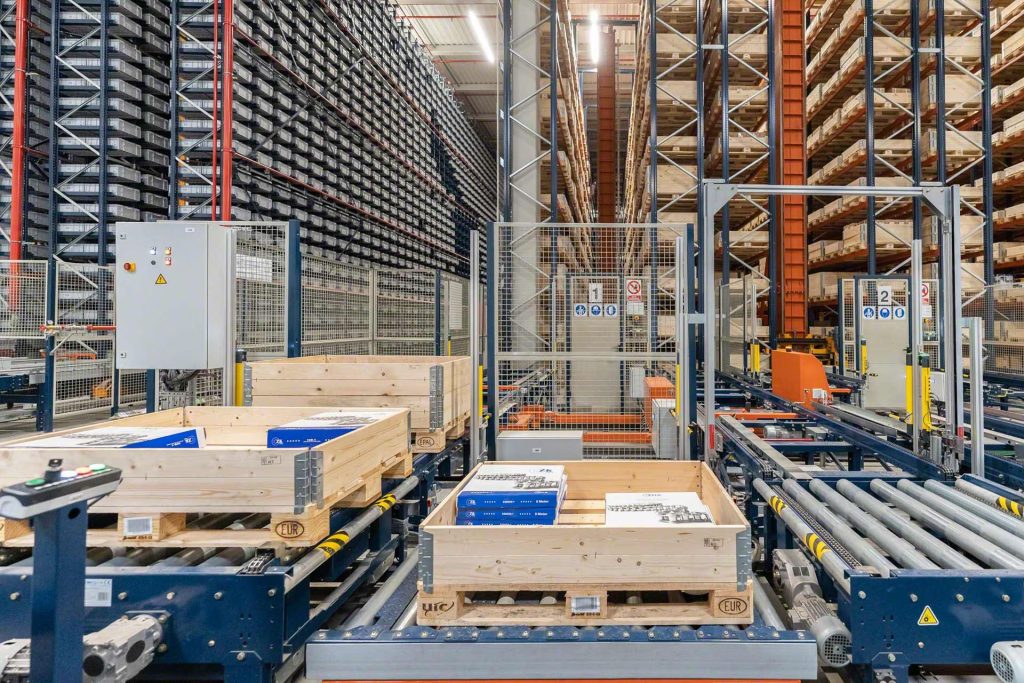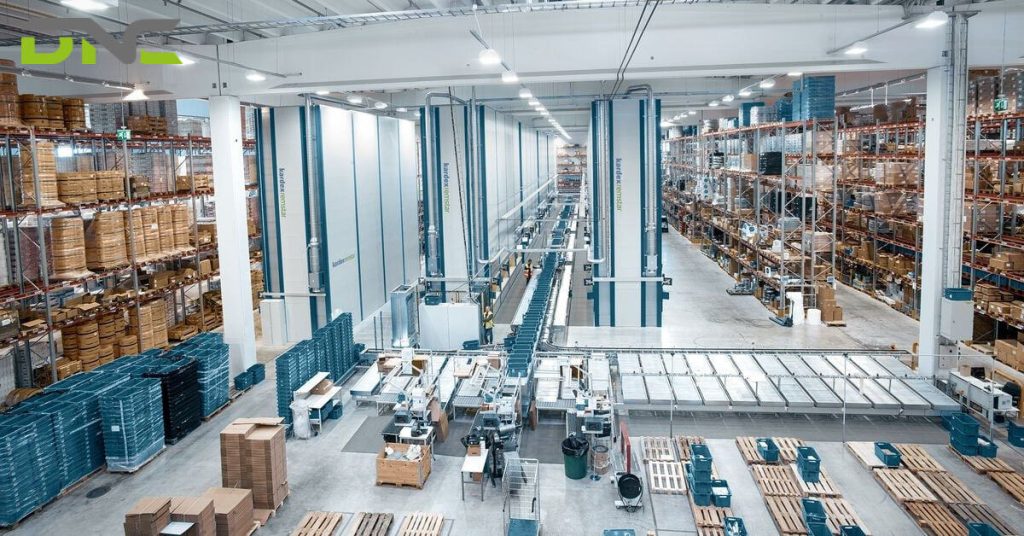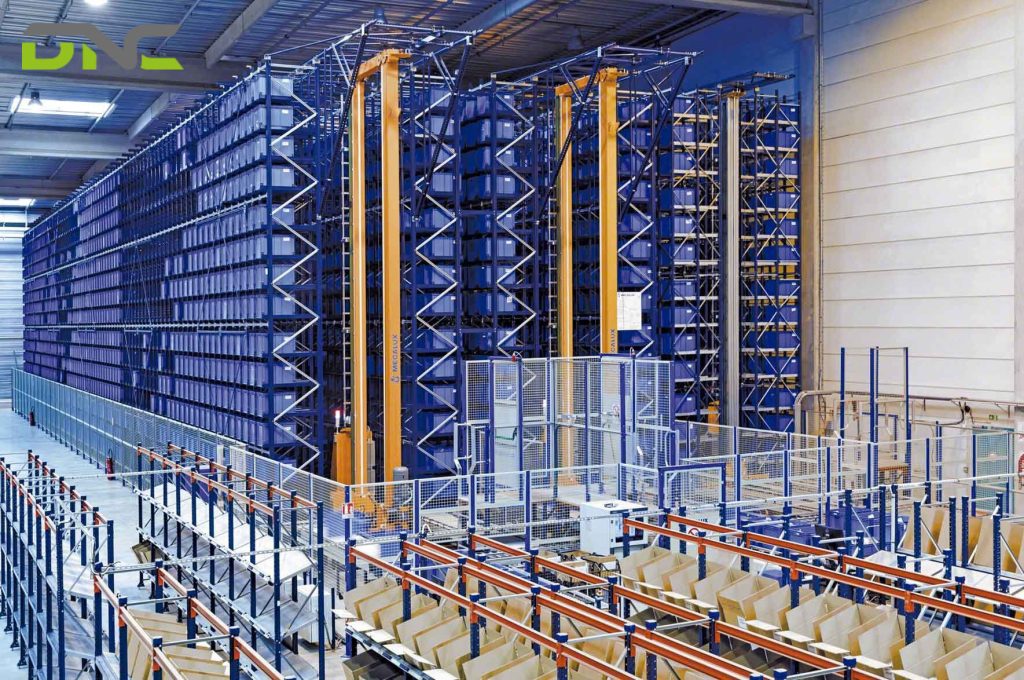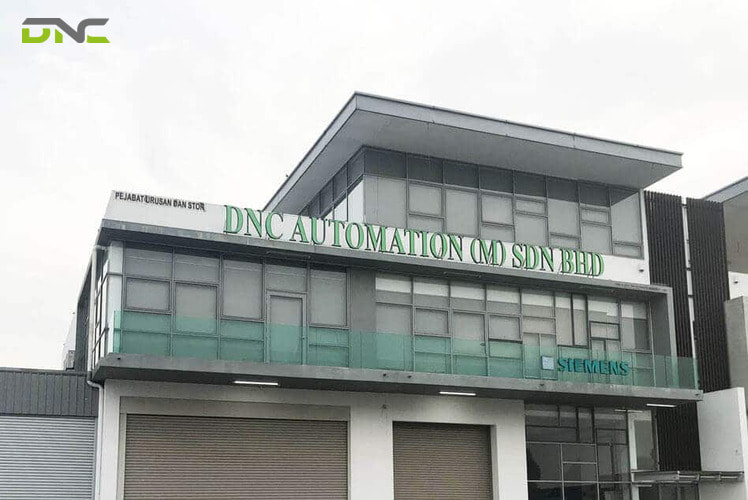Automated Storage & Retrieval System (ASRS)
ASRS Warehouse (Automated Storage and Retrieval System) is becoming the leading smart warehouse solution in the era of Industry 4.0. In Malaysia, more and more manufacturing and e-commerce businesses are choosing ASRS to increase their competitiveness and meet increasingly demanding market demands.
Automated Storage & Retrieval System (ASRS) Overview
An Automated Storage and Retrieval System (ASRS) is a warehouse solution designed to automate the storage, retrieval, and management of inventory. Unlike traditional manual warehouses, ASRS systems use a combination of racking systems, automated cranes or shuttles, conveyors, and warehouse management software (WMS/WCS) to handle goods efficiently and accurately.
Overall, ASRS is a critical component for smart warehouses, e-commerce fulfillment centers, and high-volume manufacturing facilities, enabling businesses to increase productivity, reduce labor costs, and improve operational efficiency.

Automated Storage & Retrieval System (ASRS) Overview
How is the ASRS Warehouse solution from DNC?
To help businesses operate smart warehouses effectively, DNC Automation provides a comprehensive ASRS solution. The system not only automates storage and retrieval but also integrates advanced technology, ensuring speed, accuracy and optimizing operating costs.
- Consulting & designing: Building a system suitable for warehouse scale, type of goods and operating flow.
- Installation & integration: Smart shelves, conveyors, shuttle robots, synchronous and accurate WMS/WCS software.
- Maintenance & optimization: Periodic maintenance service, upgrading and optimizing operating performance.
- Advanced technology: Integrating AI, IoT and real-time data to increase speed, reduce errors and optimize warehouses.

DNC Automation provides a comprehensive ASRS solution
Different Types of ASRS
DNC Automation offers a wide variety of ASRS systems to suit different storage needs and warehouse sizes. Here are 5 popular types:
Unit Load ASRS – pallet storage
The Unit Load ASRS is one of the most common automated storage solutions, designed to handle full pallets using stacker cranes that move within high-rise racking. This system is widely used in industries dealing with bulky or heavy goods such as FMCG, beverages, chemicals, and cold storage. It enables efficient handling of large volumes while maximizing warehouse height and ensuring smooth operations.
Advantages
- High storage density, making full use of vertical space
- Stable and reliable operation
- Supports FIFO/FEFO for accurate inventory rotation
Limitations
- Requires standard pallets and racking for compatibility
- High initial investment (CAPEX)
Mini-Load ASRS – tote/bin storage
The Mini-Load ASRS is designed for handling small containers such as totes, bins, or cartons. Using mini-load cranes or shuttles, the system transports goods directly to a goods-to-person workstation. This makes it especially suitable for operations with many SKUs, small order sizes, and where accuracy and speed are critical—such as in e-commerce, electronics, pharmaceuticals, and spare parts.
Advantages
- High picking speed with minimal errors
- Better space optimization compared to static racking
- Easy integration with pick-to-light, put-to-light, scale, or scanning systems
Limitations
- Requires standardization of trays or boxes
- Limited load capacity per unit
- Higher upfront investment and complex software integration
Carousel-based ASRS – horizontal/vertical carousel
The Carousel-based ASRS uses horizontal or vertical carousel systems (including Vertical Lift Modules – VLM) to deliver trays or compartments directly to the operator’s workstation. It is commonly used for small parts, components, maintenance, repair, operations and healthcare industries.
Advantages
- Compact design and user-friendly operation
- Saves floor space and minimizes worker movement
- Quick installation and relatively fast setup
Limitations
- Moderate throughput compared to shuttle-based systems
- Limited tray/compartment size and capacity
- Not suitable for oversized or very heavy items
Shuttle-based ASRS – robot moving in the rack lane
The Shuttle-based ASRS uses multi-level shuttles that move inside rack lanes, supported by lifts to transfer loads between levels and aisles. This system can handle pallets or totes and is widely used in high-demand distribution centers such as FMCG, e-commerce, and 3PL, where fast order processing and short lead times are critical.
Advantages
- Very high throughput, ideal for peak demand
- Flexible and scalable with modular expansion
- Reliable and efficient for complex operations
Limitations
- High initial investment (CAPEX)
- Complex design and strict synchronization needed
- Maintenance requires specialized skills
Crane-based ASRS – automatic crane system
The Crane-based ASRS uses cranes that move along racking aisles with telescopic forks to handle loads. It is available in single- or double-mast, single-deep, or double-deep designs. This system is commonly used in high-bay warehouses, cold storage, and facilities requiring stable operation with medium to high throughput.
Advantages
- Maximizes vertical space with high-bay storage
- Energy-efficient compared to some high-speed systems
- Durable with long operational lifespan
Limitations
- Limited throughput per aisle (one crane per aisle)
- Scaling requires additional cranes or aisles, raising cost and space needs

Different Types of ASRS
Why should you use ASRS Warehouse system with DNC?
- Increase storage density & save space: ASRS allows you to take advantage of warehouse height, storing more pallets/boxes in the same area.
- Reduce labor & operating costs: The automation system helps to significantly reduce the number of workers for import – export – transportation operations.
- Fast & accurate order processing speed: ASRS operates continuously at high speed and with extremely low errors, shortening the time from order entry to goods availability.
- Real-time inventory control, error reduction: Combined with WMS/WCS, the ASRS system allows real-time inventory tracking, accurate storage location down to each pallet/box. Businesses can easily plan supply, reduce shortages or excess goods.
- Improve safety & efficiency for businesses: No more forklifts running densely in the warehouse, the risk of accidents is greatly reduced.
How is the ASRS Warehouse solution from DNC Automation?
DNC Automation is trusted by many businesses to be a companion in implementing the ASRS Warehouse system for the following 4 reasons:
- Consulting & designing a complete solution: Analyzing warehouse needs, proposing suitable systems (Unit Load, Mini-Load, Shuttle …).
- Synchronous implementation & integration: Installing mechanics, robots, conveyors and integrating with existing WMS/ERP.
- Optimizing operations: DNC system is designed to increase productivity, reduce errors and save maximum space.
- Long-term support & maintenance: A team of specialized engineers, ready to accompany businesses throughout the operation process.

DNC Automation


